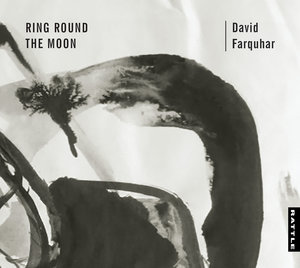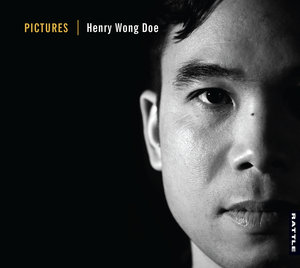New Zealand Festival 2018 presents:
ORPHEUS – A DANCE OPERA
Conceptualised and choreographed by Michael Parmenter
New Zealand Dance Company
Co-produced by the Auckland Arts Festival, the New Zealand Festival
and the New Zealand Dance Company
The Opera House, Wellington
Friday, 16th March, 2018
The “Orpheus legend” is obviously one of the seminal “stories” which has contributed towards western civilisation’s view of itself and its place in the world down the ages. Orpheus himself is a multi-faceted figure whose qualities and exploits have been variously treated and interpreted at different stages, a process that continues to this day, as witness choreopher Michael Parmenter’s ambitious and wide-ranging “take” on the character’s far-reaching exploits.
Most people who know of the name of Orpheus straightaway associate it with that of his lover Euridice. Their tragic story has been represented variously in practically all of Western art’s different disciplines, notably that of opera – in fact it figured prominently throughout opera’s very beginnings, with Jacopo Peri’s “Euridice” appearing as early as 1600, and Claudio Monteverdi’s “L’Orfeo” in 1607. Virgil and Ovid are the two writers from antiquity most readily associated with the early forms of this story, though there are various other Orphic strands which Parmenter’s work alludes to, such as the hero’s exceptional musical skills, his association with the Voyage of the Argonauts, his rejection of the love of women after the death of Euridice, and his own death at the hands of the Maenads.
Considering this plethora of material it was no wonder Parmenter was drawn to the story and its variants, the scenarios seeming to offer ample scope for elaboration and reinterpretation in the light of more contemporaneous human experience, as with all mythological archetypes. Using a core group of dancers supported by a larger “chorus” whose movement consistently created a kind of cosmic rhythm involving both naturalistic and metaphorical ebb and flow, the production consistently and constantly suggested order coming from and returning towards an unfathomable chaos which frames the human condition as we know it, a beautiful and magical synthesis of both natural patternings and human ritual.
Lighting, costuming and staging throughout the opening sequences wrought a kind of “dreaming or being dreamt” wonderment, as a bare, workmanlike stage was unobtrusively but inexorably clothed, peopled and activated in masterly fashion. As if summonsed and borne by divination, a platform on which were seated a group of musicians playing the most enchanting music imaginable, literally drifted to and fro, as if in a kind of fixed and preordained fluidity, in accordance with the magical tones produced by these same musicians and their instruments. Not unlike the dancers, the singers grouped and regrouped with the action’s “flow”, effectively choreographing sounds in accordance with the whole. The music was largely from the baroque era, from the world of Marc-Antoine Charpentier, Jean de Saint-Colombe, Antoine Boesset, Michel Lambert, Etienne Moulinie and Jean-Philippe Rameau, hauntingly sung and played by singers and musicians from both sides of the Tasman. Their efforts were interspersed with the sonicscapes of composer David Downes, whose elemental interpolations at key dramatic points underpinned the powerful fusion of immediacy and other-worldliness of the baroque sounds with something inexplicably primordial in effect, a sense of interplay between order and chaos far beyond human control.
During the work’s course I was stunned by the range and scope of expression wrought by the dancers, their bodies both individually and collectively driven, it seemed, by a compelling energy and physicality whose expression spoke volumes – I felt hampered by not being able to get a reviewer’s programme, for some inexplicable reason (there were still some on sale when I asked but I had insufficient money to actually purchase one), and thus found myself “in the dark” in situ regarding some of the specific intents of the stage action, particularly in the work’s second part – borrowing a copy from a friend afterwards helped to clear up some of the moments where I felt myself not quite in synch with the stage action at the time.
In the light of the comments made by Parmenter and his team in the booklet I would wish, if I could, to go back and explore more deeply the layers of action, thought and suggestion which the show embedded beneath the basic stories. Some people I spoke to afterwards shared my feeling that the production’s content seemed TOO overlaid, and that less would have meant more – I remain equivocal in my reaction to the effect of things such as the “storming of the ramparts” representation, to give but one example, even after considering Parmenter’s idea of a “knocking down” of a bastion of male ego by the female agents of being, in the story.
Still, what endures for me is the memory of the dancers and their skills – approaching transcendence in their fluency and articulation, as well as conveying incredibly layered and interactive meanings both in individual and concerted movement and gesture. Assisted by the flowing effect of Tracy Grant-Lord’s costumes, the characters’ bodies enacted eloquent and atmospheric chiaroscuro play between clarity and concealment, whose visual tensions everywhere enhanced the power of the story-telling. While readily feeling the power of presence of the two principal name-character dancers, Carl Tolentino as Orpheus and Chrissy Kokiri as Euridice, I was equally taken with the individual characterisations of their colleagues (see below), even if, towards the end I thought the distinctiveness of their movements lost a little of their cutting edge through repetition (perhaps I was the one who was tired by this time, trying to make better sense of the cornucopia of stage incident!).
Full credit, then to this company of dancers who supported the efforts of the two leads already mentioned – Katie Rudd, Sean McDonald, Lucy Marinkovich, Eddie Elliott, Bree Timms, Toa Paranihi and Oliver Carruthers – as well as to the dedicated work of the local “movement chorus” (all of whom were volunteers). Enabling Tracy-Lord-Grant’s costumes and John Verryt’s inventive settings to display their full effect was the atmospheric lighting of Nik Janiurek, whose stated purpose was keeping “the flow of light across the stage” in accord with Orpheus’music. Michael Parmenter’s engaging choreography did the rest in tandem with his dancers’ and musicians’ focused efforts.
No one work of art will reveal all of its secrets in one encounter or during one performance – and the subjective nature of any one critical response is a moveable feast when put against others’ reactions. Michael Parmenter’s creation, I freely admit, took me by surprise in its range and scope of expression, by turns striking things truly home and taking me into places where I felt some confusion – all of which leads me towards expressing the hope that it might be re-staged at some time in the near future, and that certain aspects of the presentation might come to seem clearer in their overall purpose. Parmenter himself admitted that not every theatrical image in the work was “a complete success” in response to a more-than-usually dismissive reaction from another review quarter – but so much of “Orpheus” was, I thought, powerful, innovative and challenging theatre, deserving to be thought and rethought about. It’s certainly a theatrical experience to which I doubt whether anybody could remain indifferent.
Artistic Director and Choreographer – Michael Parmenter (and the Company)
Dancers – Carl Tolentino, Chrissy Kokiri, Katie Rudd, Sean McDonald, Lucy Marinkovich, Eddie Elliott,
Bree Timms, Oliver Carruthers, Toa Paranihi
Singers – Aaron Sheehan, Nicholas Tolputt, William King, Jayne Tankersley
Musicians – Donald Nicolson, Julia Fredersdorff, Laura Vaughan (Latitude 37)
Polly Sussex, Sally Tibbles, Miranda Hutton, Jonathan Le Cocq, David Downes
Sound Score – David Downes
Producer – Behnaz Farzami
Set Designer – John Verryt
Costumes – Tracy Grant Lord
Lighting – Nik Janiurek
Rehearsal Director – Claire O’Neil
Chorus Director – Lyne Pringle

